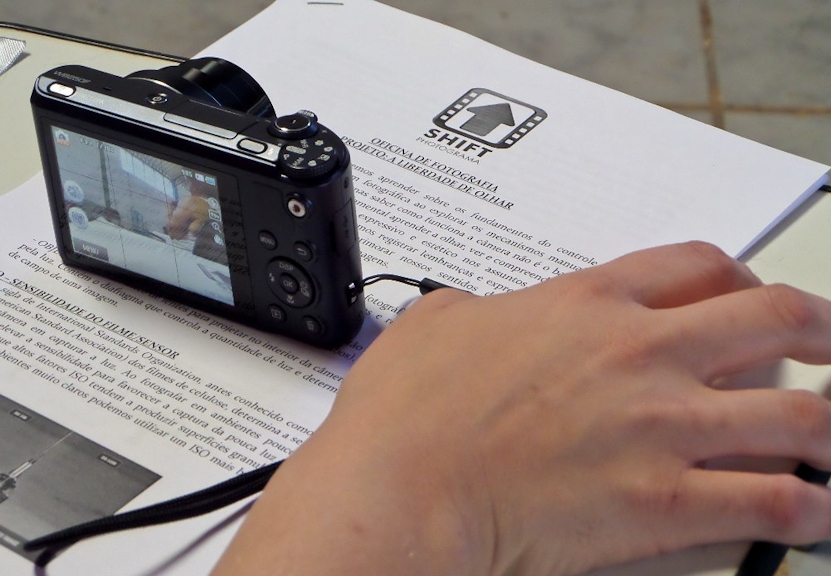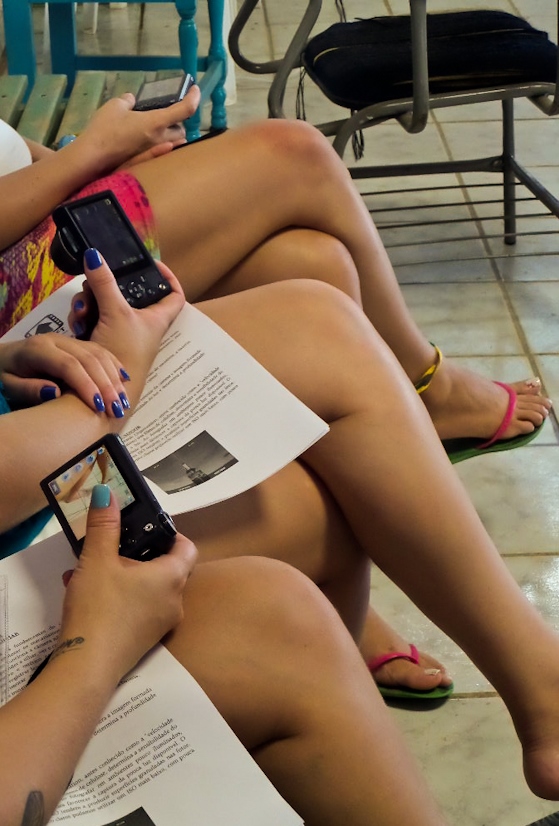UNODC launches the project "A Liberdade de Olhar" in Goiás state prisons
 |
Brasília, 7 August, 2015 - Aparecida de Goiânia, in Goiás, is the third Brazilian city to receive the project "A Liberdade de Olhar" ("Freedom to Look"), which through photography workshops, promotes dialogue on human rights gender, health and violence in the penal system. The project is the result of a partnership between the United Nations Office on Drugs and Crime (UNODC), the European Union Delegation in Brazil, the Ministry of Health, and the Ministry of Justice and it is implemented with the support of the State of Goiás.
Throughout the month of August, the State of Goiás will receive the project, which offers to inmates and prison staff the chance to express their views on the prison environment by capturing images that represent the perceptions and sentiments of those who live their daily lives in Brazilian prisons. During the first week, the project takes place in the female prison, "Penitenciária Feminina Consuelo Nasser", and counts on the participation of ten inmates. In the following weeks, the project will take place in the male prison, "Penitenciária Masculina Coronel Odenir Guimarães".
 |
"Once again the project 'A Liberdade de Olhar' presents the opportunity to hear these women who almost never have a voice, an opportunity to better understand the female situation in the prison system. Themes such as sexuality, maternity, the difficulties to enter the job market when they leave, the access to health services, food, and living together in a closed system all come to forefront and can represent an important tool for public policy makers and persons in the judiciary", affirmed Nara Santos, the HIV/Aids Programme Officer of the United Nations Office on Drugs and Crime (UNODC) at the end of the first week of the project's implementation.
The project begins with a workshop on photography, where participants learn basic concepts in photography and receive digital cameras to take snapshots of any place, object or person within their living, working and surrounding environments in prison that has special significance to them. The images produced by the participants are used in the second phase of the project. In the second phase, the methodology of the project facilitates a discussion on human rights through the photographs selected by the participants. The photographs open a space for dialogue on relations and perceptions between prisoners and prison staff, addressing concepts and guidelines on gender, vulnerability, health promotion, disease prevention and violence.
Know more:
The first edition of the project began in August 2013 at the Penitenciária Feminina Madre Pelletier and Presídio Central de Porto Alegre, and resulted in the exhibition " A Liberdade de Olhar". The exhibition consists of a collection of photographs from the two workshops that were conducted with 17 inmates and 18 prison staff members from prisons in Porto Alegre. In total, more than 100 images portraying the daily life of the two prisons, snapped in the workshops by those who live this reality every day, were exhibited along the accounts of participants. The first edition of the exhibition took place in 2013 at the Usina do Gasômetro and the Praça Quinze de Novembro in Porto Alegre. The exhibition was also displayed during the the World Forum on Human Rights and the Fourth Exhibition of Primary Care. In November 2014, the exhibition was put on display at the Global Consultation for the prevention and treatment for HIV/AIDS, care and support for people living with HIV / AIDS in prison systems, which took place in Vienna. In December, it was taken to the "I Mostra Internacional de filmes #Zerodiscriminação", which took place in Brasília. In 2015, the exhibition was taken to the 13th United Nations Congress on Crime Prevention and Criminal Justice in Doha.
We thank our UN Online Volunteer, Janine Lutchman, for her contribution to the translation of this article. Janine is an online volunteer mobilized through www.onlinevolunteering.org